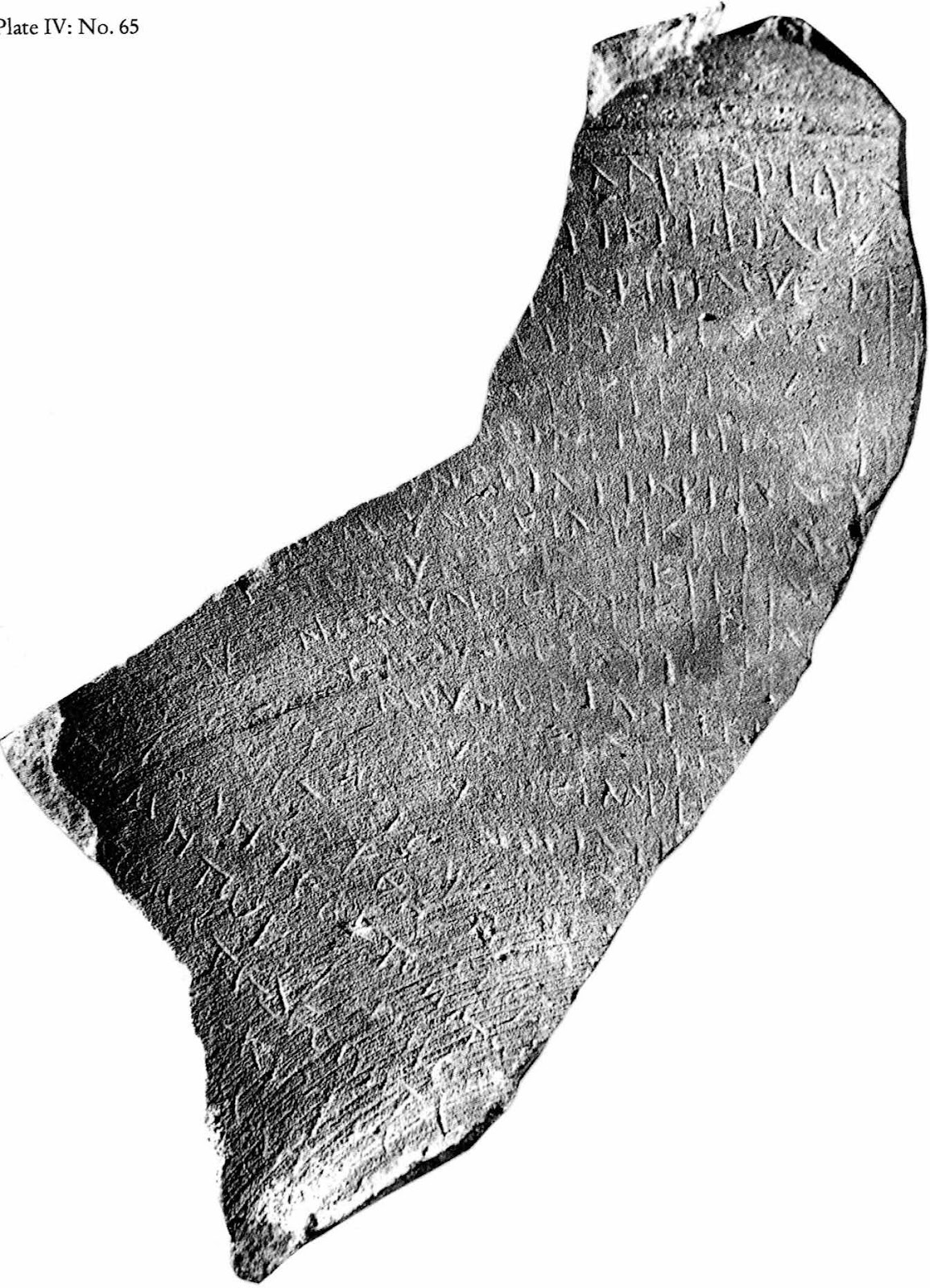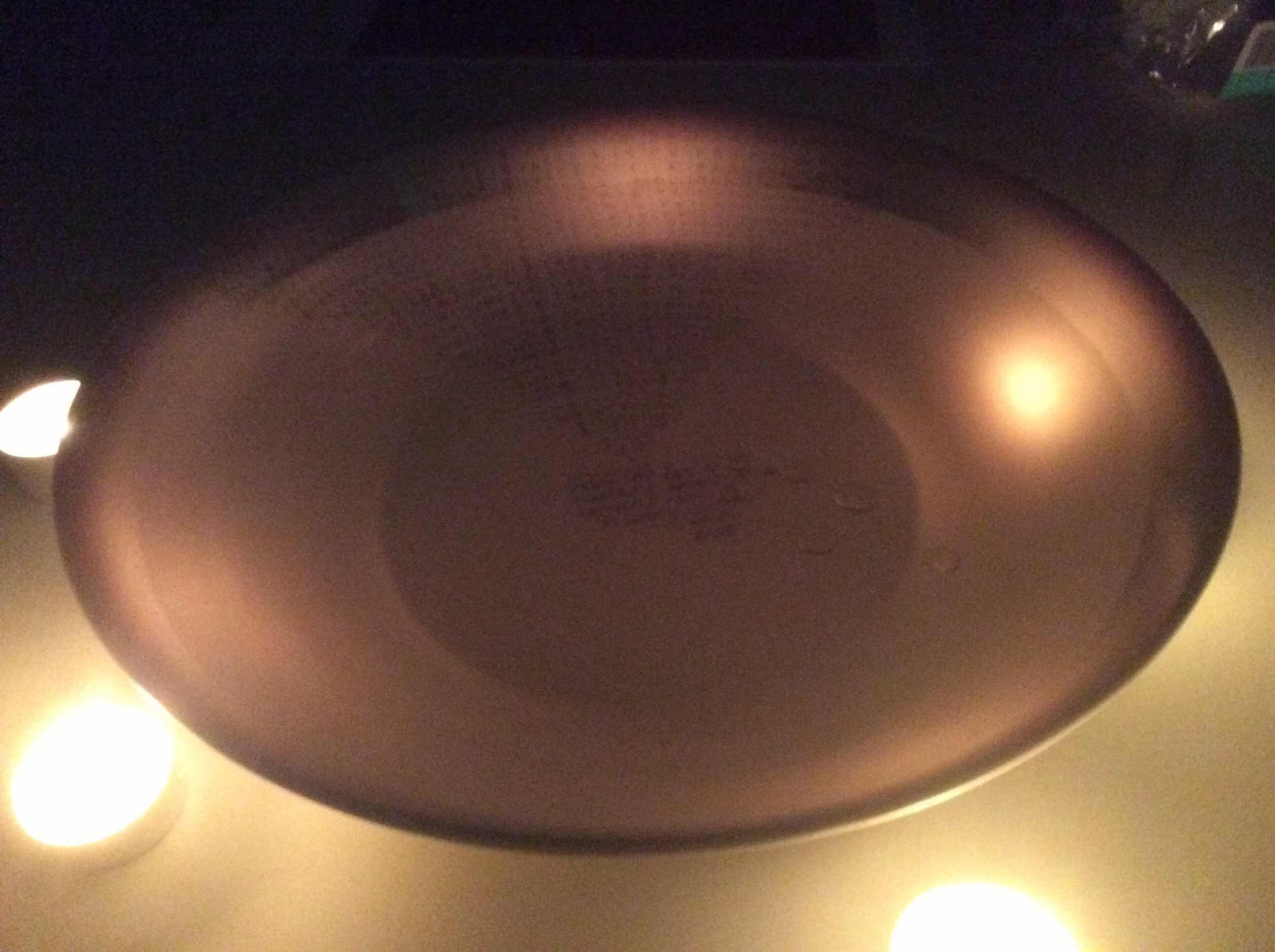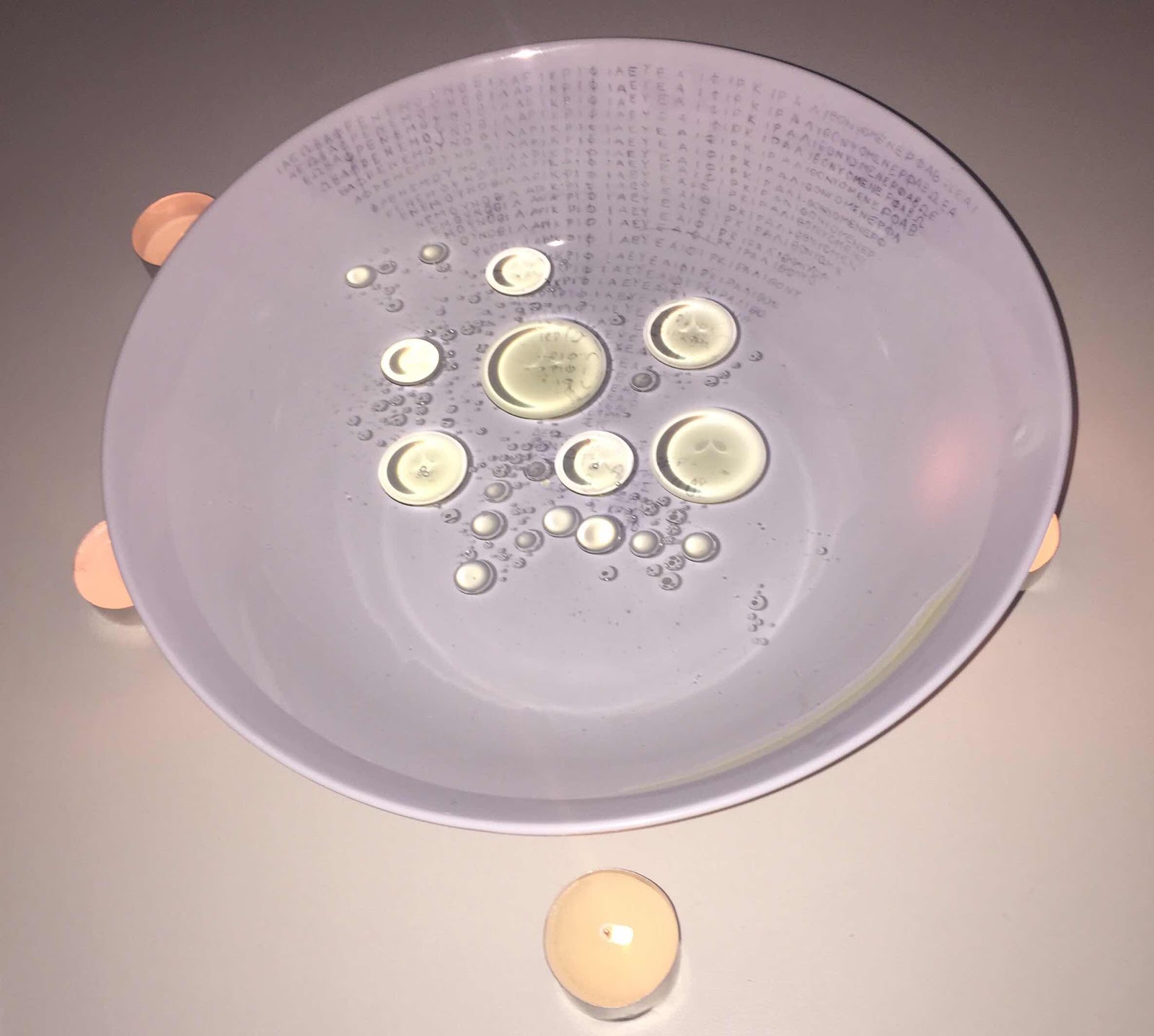Exploring Ancient Dish Divining
I decided to conclude first semester with a discussion of lecanomancy within the reading group I run at The University of Queensland. The discussion started well as I amused some students by walking into our booked room to remove students using it as a study space while wearing my witch's hat.
I love introducing students to ancient forms of magic like this for multiple reasons, but especially because it highlights how different antiquity was to today and it helps people to better understand these differences. The problem with discussing magic is that it is easy for people today to discount it and belittle it. I was reacquainting myself with some standard texts on ancient magic when I came across the following point:
I love this quote as it highlights how we aren't so different. It also reminds me of Arthur C. Clarke' third law: Any sufficiently advanced technology is indistinguishable from magic.
Fortunately there has been quite a bit of research published lately addressing why and how religion worked psychologically (consider the research of Sarah Iles Johnston in the further reading), but it should also be remembered that even some people in antiquity called some magic out as fake.2
There are numerous varieties of divination but I chose lecanomancy because of its great antiquity; it is mentioned in passing in the book of Genesis (44.5) and its use in Babylon by the 18th century BCE at the very latest. This means that this form of divination was at least 2000 years old by the time the papyri and inscriptions I meant to discuss had been written.
Lecanomancy is named from the Greek terms for dish, pot, or pan - λεκος, λεκανη, λεκανος, but the nouns for a dish-diviner, λεκανομαντις, or dish-divining, λεκανομαντεια, are not terribly frequent. It also appears that any kind of vessel could be used.
I have written up all the research I conducted for this discussion into a paper I have posted to Academia, simply because it is extraordinarily heavy with references to various ancient sources and modern discussions - material which is rather heavy for a simple blog post. If you want to know more, I strongly recommend you read it here. It goes into some background on Babylonian "oil omen compendiums", and a detailed analysis of four texts I set as reading for the group and includes those texts. Here I will instead discuss the demonstration of lecanomancy I undertook, a topic I cover at the end of the Academia paper.


I did not try to match the medium as numerous media were described as used for dish divining, given that the texts I set included a clay pot, a bronze vessel, a white saucer or a bronze cup, or a copper cup. This variety suggests that there was no particular type of vessel specific for this divining, so a cheap bowl from my local cheap store was what I used. I engraved it using a scribe typically used for artist dry point engraving. I used a sharpie pen and rubbing alcohol to push some ink into the engraved text. I had first used a sharpie to write the the formula, but it proved not to be particularly permanent when water was added to the dish. The engraving consists of a magical palindrome, written to reduce it by one letter with each iteration, and a spell:
I brought five tea candles to light to provide an artificial light as many divinatory rituals took place at night, as shown in the last example. I do not have any ancient style lamps, so tea candles were used instead. I brought some olive oil and an eye dropper to apply the oil to the water. I also printed the pages from the Great Magical Papyrus of Paris which has been digitised at their actual size.


These images can be found at https://gallica.bnf.fr/ark:/12148/btv1b525030475/f8.image and https://gallica.bnf.fr/ark:/12148/btv1b525030475/f9.image respectively.
We then lit the candles after turning off the lights. I passed around the copy of the codex for students to look at and attempt reading with such a poor light source. While some thought at first it was reasonable, upon closer investigation it was deemed quite problematic.
Because drops of oil were described in the early Babylonian oil omens, I first used the eye dropper to add drops of oil and watch their movement by candle light.

I continued to add drops of oil, to the dish, but eventually poured what oil I had in. You can see that the play of light on the oil is somewhat different here.

The way the oil looks under modern lighting typical in a university classroom is again somewhat different.

Students tried to read omens like those I had mentioned from the Babylonian oil omen lists, but I had not provided full lists as Babylonian lecanomancy was not meant to be the topic. If I were to do this again, I would gather such a list for students to use, and perhaps use blank individual bowls for each participant to use.


So while filling water’s surface with oil could create a reflective surface, the “reflection of heaven” statement might hark back to the Babylonian origins of lecanomancy. Oil omens used in Babylonian lecanomancy were described with celestial comparisons and metaphors because the light reflecting from the oil drops looked like heavenly bodies.3 While this is not as apparent in the first photograph taken without flash, it is undeniable in the second flash assisted photograph. So yes, this ritual might require the entire surface to be covered with oil and then reflecting the night sky, but there is another potential way to interpret the instructions.
Students found it an interesting experience too, and they informed me it helped them better appreciate material surrounding ancient divination and magic.
Truly, if you do want to know more details, read the paper I have posted to Academia.edu, "Exploring Ancient Lecanomancy". If you don't have an Academia.edu account, you can log in with Facebook.
1 Luck, G. (2006). Arcana Mundi: Magic and the Occult in the Greek and Roman Worlds. Johns Hopkins University Press, p. 1.
2 Hippolytus, Refutations of the Heresies 4.35 is but one example.
3 Anor & Cohen (2018): 203.
I love introducing students to ancient forms of magic like this for multiple reasons, but especially because it highlights how different antiquity was to today and it helps people to better understand these differences. The problem with discussing magic is that it is easy for people today to discount it and belittle it. I was reacquainting myself with some standard texts on ancient magic when I came across the following point:
Ancient magic and modern science have some of the same goals. They also formulate laws—laws that happen to be true in the case of science but largely false (from our point of view) in the case of magic. The expectations are the same as well: both magic and scientific technology promise to give us powers that we, as individuals, do not possess.Today, we use the increasingly complex technology that is at our disposal without really knowing how and why it works. When it breaks down, we call in an expert to repair it, or we throw it away. In our trust that, ultimately, technology will always work for us, we are like the people of ancient times who relied on magic that seemed to work for them and had worked for their ancestors for a very long time.1
I love this quote as it highlights how we aren't so different. It also reminds me of Arthur C. Clarke' third law: Any sufficiently advanced technology is indistinguishable from magic.
Fortunately there has been quite a bit of research published lately addressing why and how religion worked psychologically (consider the research of Sarah Iles Johnston in the further reading), but it should also be remembered that even some people in antiquity called some magic out as fake.2
There are numerous varieties of divination but I chose lecanomancy because of its great antiquity; it is mentioned in passing in the book of Genesis (44.5) and its use in Babylon by the 18th century BCE at the very latest. This means that this form of divination was at least 2000 years old by the time the papyri and inscriptions I meant to discuss had been written.
Lecanomancy is named from the Greek terms for dish, pot, or pan - λεκος, λεκανη, λεκανος, but the nouns for a dish-diviner, λεκανομαντις, or dish-divining, λεκανομαντεια, are not terribly frequent. It also appears that any kind of vessel could be used.
I have written up all the research I conducted for this discussion into a paper I have posted to Academia, simply because it is extraordinarily heavy with references to various ancient sources and modern discussions - material which is rather heavy for a simple blog post. If you want to know more, I strongly recommend you read it here. It goes into some background on Babylonian "oil omen compendiums", and a detailed analysis of four texts I set as reading for the group and includes those texts. Here I will instead discuss the demonstration of lecanomancy I undertook, a topic I cover at the end of the Academia paper.
Preparation:
First I made a divining dish styled after a sherd of a professional lecanomancer found in the Egyptian town of Antinoopolis. It is kept Museo del Vicino Oriente (Inv. No. 181/664) in Rome, but the only photograph of it I can find is that published in a source book of Ancient Greek magic (see the paper for details). Based on this, I made a melamine version.I did not try to match the medium as numerous media were described as used for dish divining, given that the texts I set included a clay pot, a bronze vessel, a white saucer or a bronze cup, or a copper cup. This variety suggests that there was no particular type of vessel specific for this divining, so a cheap bowl from my local cheap store was what I used. I engraved it using a scribe typically used for artist dry point engraving. I used a sharpie pen and rubbing alcohol to push some ink into the engraved text. I had first used a sharpie to write the the formula, but it proved not to be particularly permanent when water was added to the dish. The engraving consists of a magical palindrome, written to reduce it by one letter with each iteration, and a spell:
ιαεωβαφρενεμουνοθιλαρικνιφιαευεαιφινκιραλιθονυομενερφαβωεαι
Hither to me, self-begotten god, (created) without cast seed, father of yourself, mother of yourself, invisible, incorporeal, ruler---- hidden----- true (?) —.On reflection, I wish I had chosen an example using a shorter palindrome, as this is one of the longest recorded. To read a little more on this palindrome see this discussion of it having been found on an amulet from Livescience.
I brought five tea candles to light to provide an artificial light as many divinatory rituals took place at night, as shown in the last example. I do not have any ancient style lamps, so tea candles were used instead. I brought some olive oil and an eye dropper to apply the oil to the water. I also printed the pages from the Great Magical Papyrus of Paris which has been digitised at their actual size.
These images can be found at https://gallica.bnf.fr/ark:/12148/btv1b525030475/f8.image and https://gallica.bnf.fr/ark:/12148/btv1b525030475/f9.image respectively.
Experimentation:
Once at University, I had a student acquire some water from the nearest bathroom. According to one of the examples of lecanomancy I had students read about, the type of water you used should reflect the nature of the supernatural entity which you wished to contact:… rainwater, if you call on the heavenly gods, seawater, if (you call) on the gods of the earth, river water, if you call on Osiris or Sarapis, spring water, if you call on the deadI am not sure what kind of supernatural entity might be matched with this water source.
We then lit the candles after turning off the lights. I passed around the copy of the codex for students to look at and attempt reading with such a poor light source. While some thought at first it was reasonable, upon closer investigation it was deemed quite problematic.
Because drops of oil were described in the early Babylonian oil omens, I first used the eye dropper to add drops of oil and watch their movement by candle light.
I continued to add drops of oil, to the dish, but eventually poured what oil I had in. You can see that the play of light on the oil is somewhat different here.
The way the oil looks under modern lighting typical in a university classroom is again somewhat different.
What would I do different?
I had not tried to experiment with this at home before I tried this with students, and as a result, I did not have enough oil to fill the surface completely. If I were to do this again, I would bring more oil than the third of a Masterfoods small spice bottle.Students tried to read omens like those I had mentioned from the Babylonian oil omen lists, but I had not provided full lists as Babylonian lecanomancy was not meant to be the topic. If I were to do this again, I would gather such a list for students to use, and perhaps use blank individual bowls for each participant to use.
Conclusions
I found the experience helpful to understanding how this form of divination was used. One of the texts I set came from the Demotic Magical Papyri, and a couple of phrases in it said “Let my cup make the reflection (?) of heaven” and “you fill the top [of the water] with true oil”. Now the entire purpose of the demonstration was to help us better understand lecanomancy, and the experiment here made me think a little harder about these passages. Oil on water with specific light sources can appear variously. Consider the comparison of my photograph without flash to that of Chris Wood's with flash.So while filling water’s surface with oil could create a reflective surface, the “reflection of heaven” statement might hark back to the Babylonian origins of lecanomancy. Oil omens used in Babylonian lecanomancy were described with celestial comparisons and metaphors because the light reflecting from the oil drops looked like heavenly bodies.3 While this is not as apparent in the first photograph taken without flash, it is undeniable in the second flash assisted photograph. So yes, this ritual might require the entire surface to be covered with oil and then reflecting the night sky, but there is another potential way to interpret the instructions.
Students found it an interesting experience too, and they informed me it helped them better appreciate material surrounding ancient divination and magic.
Truly, if you do want to know more details, read the paper I have posted to Academia.edu, "Exploring Ancient Lecanomancy". If you don't have an Academia.edu account, you can log in with Facebook.
1 Luck, G. (2006). Arcana Mundi: Magic and the Occult in the Greek and Roman Worlds. Johns Hopkins University Press, p. 1.
2 Hippolytus, Refutations of the Heresies 4.35 is but one example.
3 Anor & Cohen (2018): 203.
Further Reading
Betz, H. (1986). The Greek Magical Papyri in Translation Including the Demotic Spells. The University of Chicago Press.Hunt, Y. (2019). Exploring Ancient Lecanomancy.
Luck, G. (2006). Arcana Mundi: Magic and the Occult in the Greek and Roman worlds. Johns Hopkins Press.
Johnston, S. (2001). "Charming Children: the use of the child in ancient divination," Arethusa 34: 97-117.
Johnston, S. (2015). "The Authority of Greek Mythic Narratives in the Magical Papyri," Archiv für Religiongeschichte 16: 51-65.
Anor, N. & Cohen, Y. (2018). "The Oil Omens from Hattuša: An Investigation if the History and transmission of a Babylonian Divination Compendium," JNES 77: 195-206.
Luck, G. (2006). Arcana Mundi: Magic and the Occult in the Greek and Roman worlds. Johns Hopkins Press.
Johnston, S. (2001). "Charming Children: the use of the child in ancient divination," Arethusa 34: 97-117.
Johnston, S. (2015). "The Authority of Greek Mythic Narratives in the Magical Papyri," Archiv für Religiongeschichte 16: 51-65.
Anor, N. & Cohen, Y. (2018). "The Oil Omens from Hattuša: An Investigation if the History and transmission of a Babylonian Divination Compendium," JNES 77: 195-206.

Comments
Post a Comment